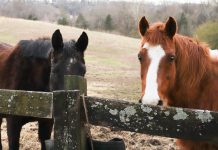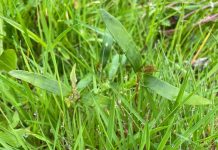SPILLERS™, via the WALTHAM Equine Studies Group, has been involved with 100 published research papers in the past twenty years, relating to equine metabolic syndrome (EMS), obesity, laminitis and weight management. The work is a part of the feed brand’s commitment to enhancing equine health and wellbeing and is summarised in a recently published paper Equine metabolic syndrome: evolution of understanding over two decades: a personal perspective. 1
“Obesity is a major welfare issue for horses and ponies, not only because of the direct weight-associated effects, but also due to the increased risk it poses for certain clinical conditions, in particular laminitis,” said Clare Barfoot RNutr, Marketing and Research and Development Director at SPILLERS. “For many owners and vets, obesity and EMS are synonymous, but our work has shown that this is not necessarily the case.”
During the past two decades SPILLERS and WALTHAM™ together with their expert collaborators around the world have been helping to unravel the complex links between EMS, insulin dysregulation, obesity and laminitis. The formation of the WALTHAM international Laminitis Research consortium in the early 2000s, followed by the formation of the WALTHAM international Obesity consortium, has brought together world- leading equine veterinary, nutrition and research experts interested in collaborating on these important topics.
To date, research has shown that while obesity may be an indicator of EMS, lean animals may also have insulin dysregulation, and may still have an increased risk of laminitis, especially if exposed to certain trigger factors such as high intakes of starch and/or sugar.
This has led to the definition of EMS subtly changing from increased general or regional obesity being a key component, to the current recognition that the key consistent feature of EMS is the presence of insulin dysregulation, associated with an increased risk of laminitis, with the variable presence of obesity and/or other metabolic alterations. Testing, especially using dynamic tests such as the oral sugar test has therefore become increasingly important in identifying and monitoring individual animals with ID and EMS.
“All animals with EMS, whether obese or lean, have an increased risk of laminitis,” explained Clare. “Although for genetic, managemental and environmental reasons, they may not all necessarily develop clinical laminitis.
“Through our continued work, our understanding of the interaction between obesity and insulin dysregulation has changed considerably since EMS was first described. The emphasis has shifted from tissue or peripheral insulin resistance to insulin dysregulation, with a focus on diet- and gut-related factors that appear to be associated with hyperinsulinaemia. However, obesity is still a major problem that needs to be identified and addressed for many health and welfare reasons not least that being obese may make any laminitic episode more severe and result in slower recovery.
“In simple terms Equine Metabolic Syndrome (EMS) means your horse has a set of factors that place him or her at higher risk of getting laminitis. It is important that you manage as many of these risk factors as you can, the most obvious two being weight and diet.”
Clare’s nutritional management tips include:
- Provide a diet low in non-structural carbohydrate (which includes starch and water soluble carbohydrates: WSC). WSC consists predominantly of simple sugars and fructans, the ‘storage’ form of sugar in most UK grasses and other plants.
- Restrict or possibly remove access to grazing.
- Ideally feed a low WSC hay (less than 10% on a dry matter basis) or a hay replacer low in starch and sugar. Although soaking helps to reduce WSC, results are highly variable and soaking alone can’t guarantee suitability for those prone to laminitis.
- Unless feeding ad lib, increase the amount of hay you soak by approximately 20% (dry matter). Due to the loss of nutrients (and therefore dry matter) into the water, each haynet will contain more water and less ‘hay’ post soaking.
- Manage weight – aim for a body condition score of around 5 out of 9 and remember that it is normal and perfectly healthy for horses and ponies to lose some weight over the winter before the arrival of better grass in the spring. You can find out more about body condition scoring here.
- Maintain a regular exercise programme where possible and consider increasing the length or intensity of exercise if feasible. However, even small amounts of exercise may help to improve insulin sensitivity.
- Adapt your feeding regimen if you have to reduce the amount of exercise or turn out your animal gets.
- Provide a balanced diet, including suitable levels of vitamins, minerals and quality protein – a feed balancer is the ideal way to provide a balanced diet without excess calories.
- If additional calories are required choose fibre-based feeds that are low in starch and sugar.
- Divide feeds into multiple small meals to help reduce the amount of starch and sugar consumed in any one meal.
- Provide a high fibre diet– do not restrict forage intake to less than 1.5% of current bodyweight (dry matter) per day unless under veterinary supervision. On average, this minimum equates to approximately 9kg of hay on an ‘as fed’ or ‘fresh weight’ basis (or ~11kg if you intend to soak it) for a 500kg without access to grazing.
1 Harris PA, Bamford NJ, Bailey SR. (2020) Equine metabolic syndrome: evolution of understanding over two decades: a personal perspective Animal Production Science 60 2103-2110
Click here to read more health articles on The Arabian Magazine.












